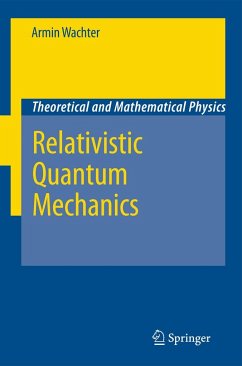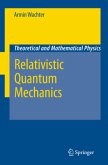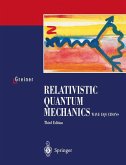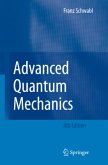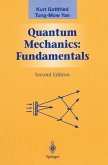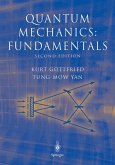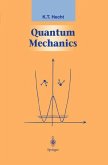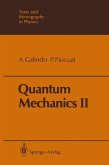_ Which problems do arise within relativistic enhancements of the Schrödinger theory, especially if one adheres to the usual one-particle interpretation?_ To what extent can these problems be overcome? _ What is the physical necessity of quantum field theories?In many textbooks, only insufficient answers to these fundamental questions are provided by treating the relativistic quantum mechanical one-particle concept very superficially and instead introducing field quantization as soon as possible. By contrast, this book emphasizes particularly this point of view (relativistic quantum mechanics in the ''narrow sense''): it extensively discusses the relativistic one-particle view and reveals its problems and limitations, therefore illustrating the necessity of quantized fields in a physically comprehensible way.The first two chapters contain a detailed presentation and comparison of the Klein-Gordon and Dirac theory, always with a view to the non-relativistic theory. In the third chapter, we consider relativistic scattering processes and develop the Feynman rules from propagator techniques. This is where the indispensability of quantum field theory reasoning becomes apparent and basic quantum field theory concepts are introduced.This textbook addresses undergraduate and graduate Physics students who are interested in a clearly arranged and structured presentation of relativistic quantum mechanics in the "narrow sense" and its connection to quantum field theories. Each section contains a short summary and exercises with solutions. A mathematical appendix rounds out this excellent textbook on relativistic quantum mechanics.
From the reviews:
"This book addresses undergraduate and graduate physics students, as well as young scientists in physics and applied mathematics who are interested in the theory of relativistic quantum mechanics in the 'narrow sense' and its connections to quantum field theories. The notions presented in the book are clearly arranged and each section contains a short summary and exercises with solutions. Important equations and relationships are summarized in boxes to allow the reader a well-structured understanding and easy reference." (Philosophy, Religion and Science Book Reviews, bookinspections.wordpress.com, March, 2014)
"The main focus of this book is the extent to which relativistic quantum mechanics can be applied. ... This textbook is written very clearly ... . a valuable asset for teaching purposes. Its main value is the detailed discussion of relativistic corrections to non-relativistic problems in quantum mechanics, which could be very useful for anyone interested in such contributions. ... the book is equally well suited as a basis for lectures, for self-study, or as a reference work for active research." (Axel Maas, Mathematical Reviews, Issue 2011 m)
"This book addresses undergraduate and graduate physics students, as well as young scientists in physics and applied mathematics who are interested in the theory of relativistic quantum mechanics in the 'narrow sense' and its connections to quantum field theories. The notions presented in the book are clearly arranged and each section contains a short summary and exercises with solutions. Important equations and relationships are summarized in boxes to allow the reader a well-structured understanding and easy reference." (Marian Ioan Munteanu, Zentralblatt MATH, Vol. 1205, 2011)
"This book addresses undergraduate and graduate physics students, as well as young scientists in physics and applied mathematics who are interested in the theory of relativistic quantum mechanics in the 'narrow sense' and its connections to quantum field theories. The notions presented in the book are clearly arranged and each section contains a short summary and exercises with solutions. Important equations and relationships are summarized in boxes to allow the reader a well-structured understanding and easy reference." (Philosophy, Religion and Science Book Reviews, bookinspections.wordpress.com, March, 2014)
"The main focus of this book is the extent to which relativistic quantum mechanics can be applied. ... This textbook is written very clearly ... . a valuable asset for teaching purposes. Its main value is the detailed discussion of relativistic corrections to non-relativistic problems in quantum mechanics, which could be very useful for anyone interested in such contributions. ... the book is equally well suited as a basis for lectures, for self-study, or as a reference work for active research." (Axel Maas, Mathematical Reviews, Issue 2011 m)
"This book addresses undergraduate and graduate physics students, as well as young scientists in physics and applied mathematics who are interested in the theory of relativistic quantum mechanics in the 'narrow sense' and its connections to quantum field theories. The notions presented in the book are clearly arranged and each section contains a short summary and exercises with solutions. Important equations and relationships are summarized in boxes to allow the reader a well-structured understanding and easy reference." (Marian Ioan Munteanu, Zentralblatt MATH, Vol. 1205, 2011)

